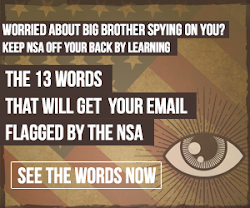In a rare victory against the secrecy that often shrouds state surveillance, a Cook County, Illinois judge has ordered the Chicago Police Department to allow her to review documents related to cellphone surveillance tools, which are sometimes known as “Stingrays.”
The ruling comes after Chicago activist Freddy Martinez filed a Freedom of Information Act (FOIA) request with the CPD in 2014. Martinez was attempting to gain information regarding when, where, how, and why Chicago police deploy the Stingrays. Martinez is also attempting to reveal what type of legal authorization is required to use the devices, as well as what happens once cellphone data is collected.
Anti-Media has reported extensively on Stingray, the brand name of a popular cell-site simulator manufactured by the Harris Corporation. The Electronic Frontier Foundation describes Stingray as “a brand name of an IMSI (International Mobile Subscriber Identity) Catcher targeted and sold to law enforcement. A Stingray works by masquerading as a cellphone tower – to which your mobile phone sends signals to every 7 to 15 seconds whether you are on a call or not – and tricks your phone into connecting to it.”
As a result, whoever is in possession of a Stingray can figure out who, when, and where a target is calling, as well as the precise location of every device within the range. With some devices, it can even capture the content of conversations.
Both Harris Corp. and the Federal Bureau of Investigations (FBI) require police to sign non-disclosure agreements (NDA) related to the use of the devices. Through these NDAs, local police departments have become subordinate to Harris, and even in court cases in front of a judge, they are not allowed to speak about the details of their arrangements.
 Due to this secrecy, very little has been known about how exactly the Stingrays work. Last month, Anti-Media reported on the release of Stingray manuals from an unknown whistleblower. The leak has helped shine a light on how the devices operate, but there is still very little information available. The little we do know was disclosed through open records requests and lawsuits filed by journalists and researchers like Freddy Martinez.
Due to this secrecy, very little has been known about how exactly the Stingrays work. Last month, Anti-Media reported on the release of Stingray manuals from an unknown whistleblower. The leak has helped shine a light on how the devices operate, but there is still very little information available. The little we do know was disclosed through open records requests and lawsuits filed by journalists and researchers like Freddy Martinez.
After Martinez filed his FOIA request, the CPD refused to provide any information, claiming revealing the data would give criminals critical information on the technology. CPD also said releasing information could possibly justify law enforcement investigations. Thankfully, Judge Kathleen Kennedy disagreed.
On Monday, Judge Kennedy ruled the CPD’s argument was too vague. Judge Kennedy wrote:
In his affidavit, SSA [Supervisory Special Agent Bradley] Morrison details FBI policy regarding the protection of any information regarding cell site simulators and issues why the disclosure of ‘even minor details’ about the use of cell site simulators can be detrimental to law enforcement efforts and public safety. However, SSA Morrison fails to mention specifically any of the documents or materials at issue in this case, nor does he profess to know any specifics about defendant’s use of this technology.
Judge Kennedy also rejected the CPD’s argument that cell site simulators should be treated like traditional pen register or trap-and-trace devices, which log incoming and outgoing numbers — but not the detailed information the Stingrays are capable of gathering. Judge Kennedy continued:
The record reflects that IMSI [international mobile subscriber identity] catchers, also known as cell site simulators or Stingrays, can capture a cellphone’s unique serial number, its location, and the content of calls, text messages, and webpages visited. Because IMSI catchers’ capabilities are broader, it is improper to equate them to and treat them as pen registers and trap and trace devices.
The judge ordered the CPD to turn over the requested documents for an “in camera review” by January 25. At that point, she will decide if any of the records are eligible for public release or if the Chicago police can maintain their secrecy.
How to Disappear Off the Grid Completely (Ad)
Freddy Martinez spoke with Ars Technica via encrypted chat about the documents he is seeking and what he expects from Judge Kennedy’s ruling. “Last time we started with eight and got 200 but this one I expect will be much bigger,” Martinez said.
This article (Activist Forces Chicago Police to Disclose Details on Stingray Cellphone Surveillance) is free and open source. You have permission to republish this article under a Creative Commons license with attribution to Derrick Broze and theAntiMedia.org. Anti-Media Radio airs weeknights at 11pm Eastern/8pm Pacific. If you spot a typo, email [email protected].


Great work Mr. Martinez and this reportage deserves to be followed as the alien/military/industrial/complex flexes its tentacles with cell phone surveillance.
All the judges and politicians want to know how much dirt is being (or has been) collected on themselves to see just how much of a target they are for blackmail. FOIA is a more discreet way to find that out.
Soon those privileged puppets will try to introduce policy that makes it illegal to monitor THEM, but not you so much. Got to keep you in check. You’re getting wise too quick after just stumbling out of the matrix.